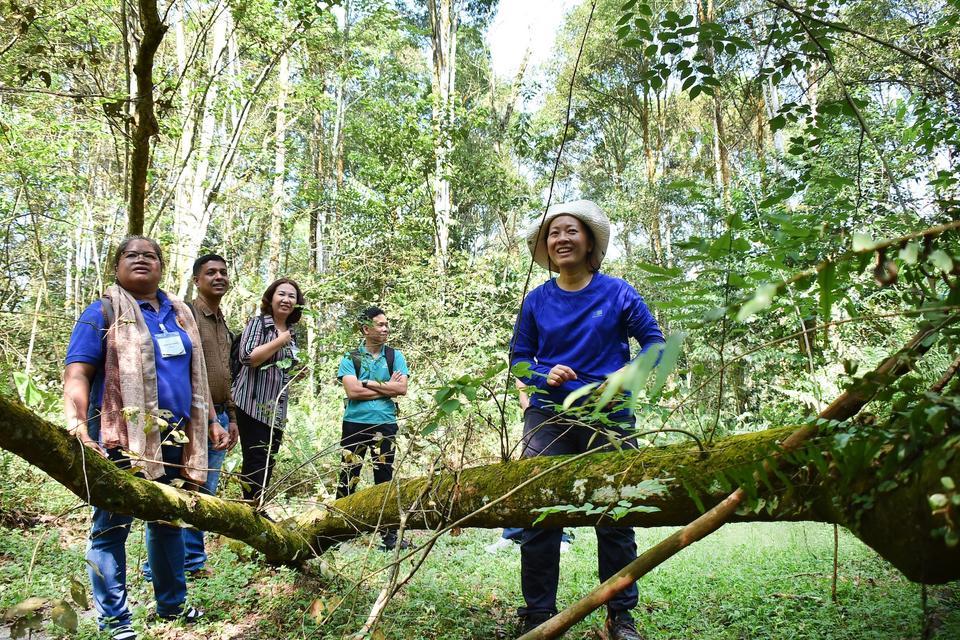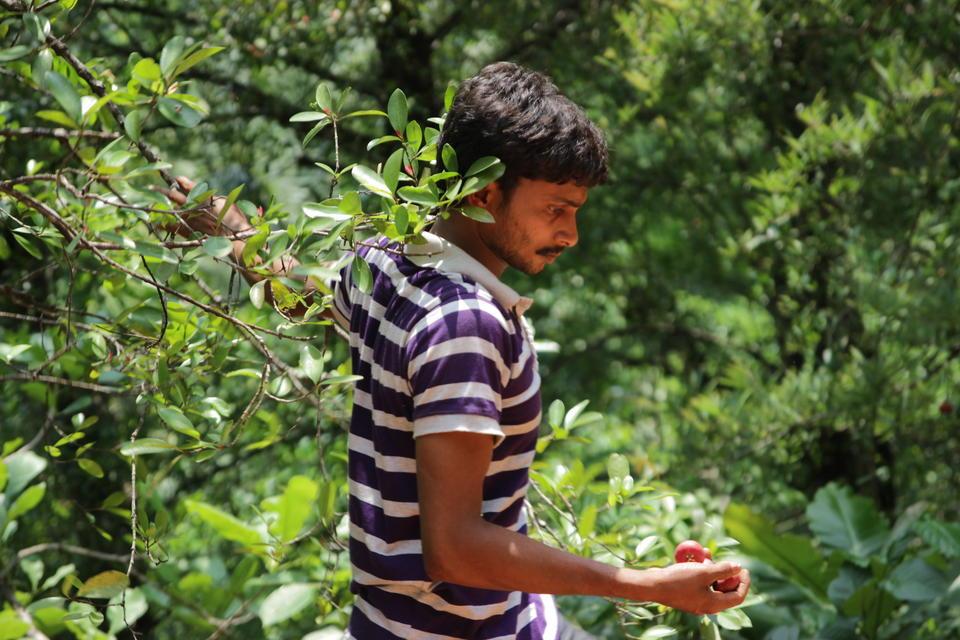From the Field Nursing Asia’s Forests Is a Community Effort
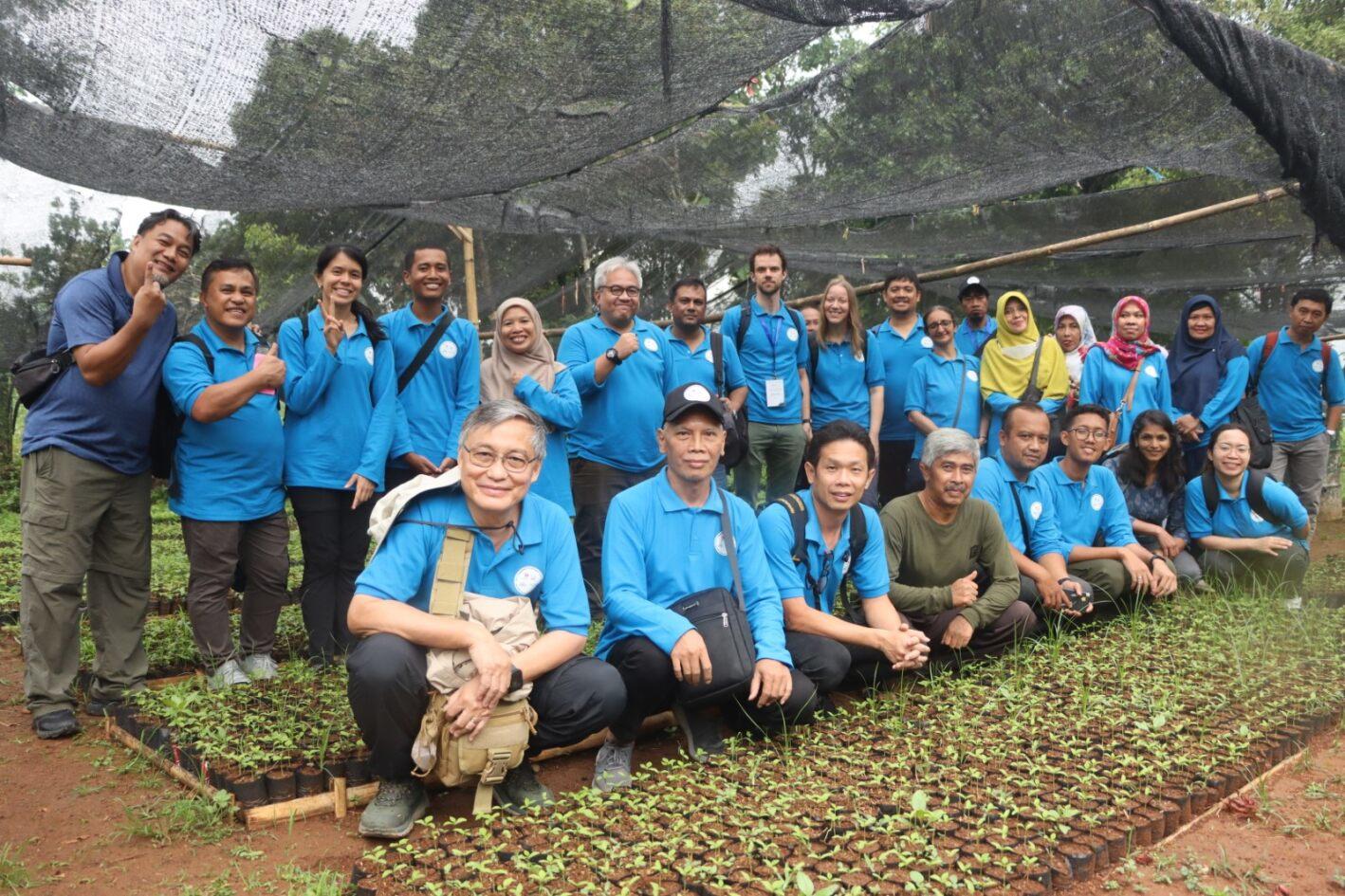
Key to the success of forest restoration and conservation in Indonesia are quality seeds and seedlings that come from community-led orchards and nurseries. Preserving native tree diversity while securing livelihoods is important to achieve biodiversity and natural resources conservation goals; to highlight best practices from capacity building to policy development, forestry experts from various Asian countries came together to share updates from their work on forest genetic resources.
West Java, 2003: In the rural village of Nagrog, Pak Tatang Sutardi walked through the barren lands south of the nearly 12,500-hectare Masigit Kareumbi Hunting Park. With the dream of repopulating the empty landscape with native trees, he gathered 24 comrades and formed the Giri Jaya Forest Farmer Group.
Fastforward to 2024, and Giri Jaya now owns a self-sustaining nursery for Gmelina (Gmelina arborea), Sengon (Falcataria falcata), and Suren (Toona sureni) among other native tree species, independently providing hundreds of thousands of seedlings for key partners since 2010 to accelerate forest restoration initiatives in the province. By the end of this year, the farmer group targets to produce 400,000 seedlings more.

Manglid (Magnolia sumatrana) seedlings, one of Indonesia’s target species in the Darwin Initiative project, being grown at the independent, community-led nursery of Giri Jaya Forest Farmer Group in Ciseupang Subvillage, Nagrog Village, Cicalengka Subdistrict, Bandung District in West Java, Indonesia. Photo by: Alie Peter Galeon
Start with Seeds: Testing, Certification, Distribution
True to its mission of becoming an active key player in forestry development - complementing local market potential and needs - Giri Jaya continues to solidify its partnerships with government and private sector actors to produce quality seeds for restoration.
The 20-year-old forest farmer group has been working with the West Java Province Forestry Agency since 2015, through the Forest Tree Seed Certification Program (SPTH). In West Java, the technical implementing unit provides recommendations and guidance for seed certification, information on forest plants and seedlings, and seedlings for restoration and environmental services from 25 certified seed sources and 75 distributors. SPTH strictly mandates testing seed of Indonesia’s 11 restoration priority species before distribution while highlighting the need to procure these seeds only from registered sources; otherwise, restoration implementers would face corresponding sanctions.
“Technologies for improving forest tree seeds remain challenging [for us at SPTH]. Obtaining quick yielding forest tree seeds is challenging as they require revolutionary innovations to provide the foundation for community restoration and land remediation.”
Dede Mahmiludin, Head of SPTH
Giri Jaya and the Forestry Agency’s partnership dates back to 2010, when the agency supported the building of the community-based nursery to supply 200,000 seedlings to several farmer groups across the Bandung district to support the agency’s agroforestry programs.
For Pak Tatang and his fellow forest farmers, their mission has been evident since day one: rehabilitate and reforest the 25-hectare critical land within Western Java’s Cicalengka Subdistrict. As such, only two members initially worked in the nursery while the remaining 23 farmers continued the work on conservation and restoration. After a year of forming Giri Jaya, all 25 of them have permanently focused on their now self-sustaining nursery.
The 60-year-old Pak Tatang maintained that establishing the nursery is as necessary as improving quality tree seed sources to ensure that the future of restoration work finds a safe - albeit temporary - home before these seedlings could bring back degraded landscapes to life.
Throughout its partnership, Giri Jaya has produced more than two million seedlings to support restoration in West Java and other important locations across the province. This year, they are expected to produce 300,000 seedlings to help meet the agency’s targets while being involved in the establishment of a new seed source for forest tree species.
Partnership-driven Forest Restoration in West Java
“Pak Tatang is one of the true heroes in restoration. His continuous efforts and love for forest trees, by providing quality seedlings to support forest and landscape restoration in West Java, are a tireless struggle,” says Dr Vivi Yuskianti of Indonesia’s National Research and Innovation Agency (BRIN).
BRIN - the Alliance of Bioversity International and CIAT’s main partner in Indonesia - is part of the two-year UK-funded Darwin initiative project.
Under this initiative, Indonesian forestry experts and restoration practitioners work closely with the Alliance and three other member countries of the Asia-Pacific Forest Genetic Resources Programme (APFORGEN), a regional network supporting scientific cooperation on conserving and managing forest genetic resources across 15 member countries.
This collaboration enabled BRIN to create a forest tree seed information system that monitors all information related to certified seed sources and its distribution. An up-to-date, user friendly and integrated system with filtering and interactive mechanisms, this system can determine the status of each seed source, stock and position of certified seeds in each seed producer, trace seed distribution pathway, and track the circulation of forest tree seeds and seedlings to potentially minimize the use of illegal ones.
While the tool has received informal support for use nationally, after being successfully tested in West Java, BRIN is still waiting for an official agreement with the ministry to make the system fully operational and available online.
Meanwhile, the seed zone map can also be synergized and integrated into the system to ensure that existing seed sources (certified seeds) relate to information on precise planting locations (seed zone). The map, also developed under the project, is a useful guide to improve the adaptation and growth of seedlings, further increasing the success of forest restoration initiatives.
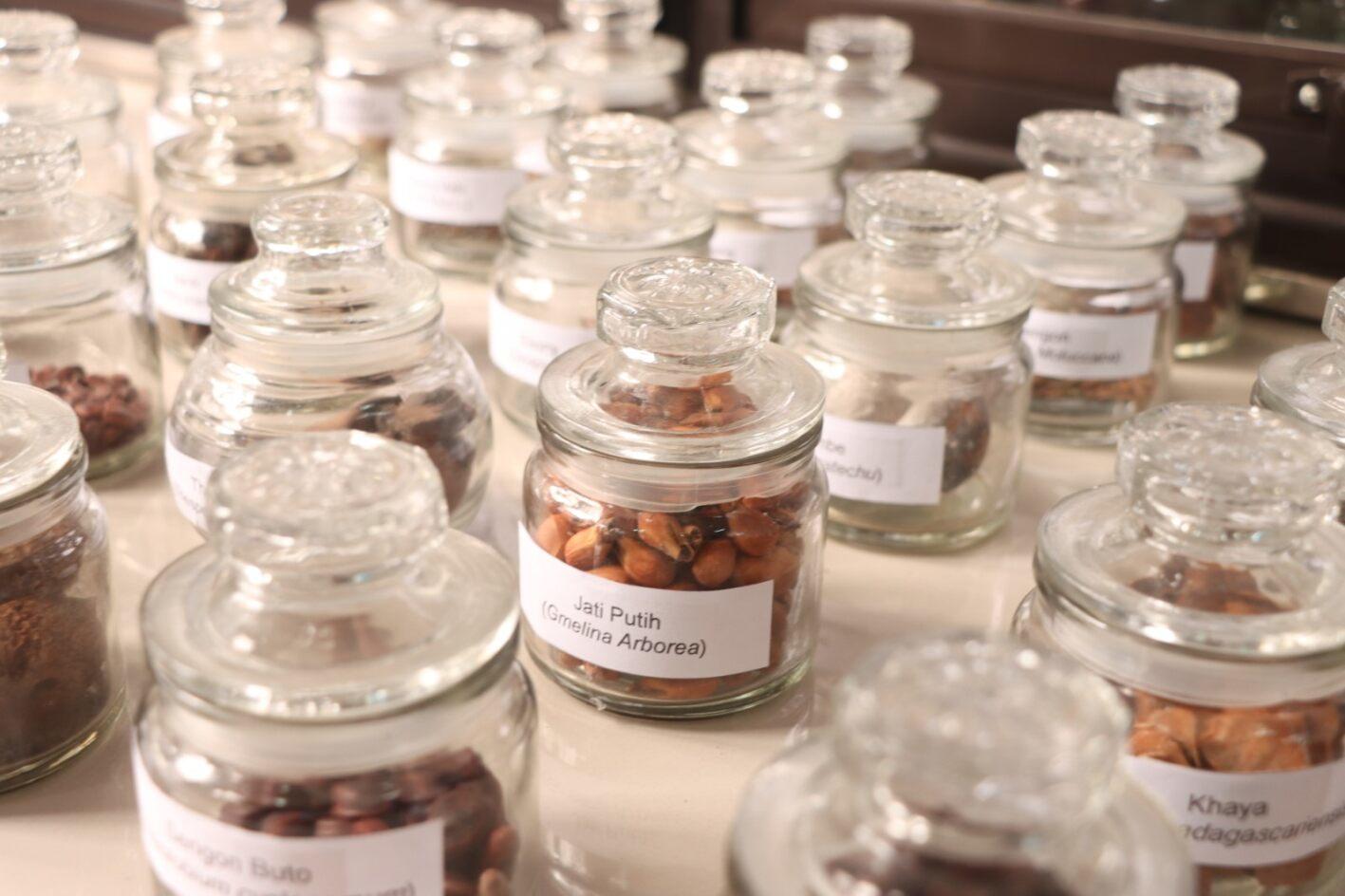
Quality-tested seeds from the laboratory of the Forest Tree Seed and Certification Technical Implementing Unit from the West Java Province Forestry Agency. Photo by: Ysabel Lee
With the Indonesian government’s commitment to restore 12 million hectares of degraded lands and foster the rehabilitation of degraded peatlands and mangroves, BRIN engaged with community-based nurseries, as in the case of Giri Jaya. Dr Vivi recognizes how local communities, with direction and support from the ministry, could play an important role in increasing the number of certified seed sources, particularly for native species.
The farmer group supplied and distributed seedlings within Pak Tatang’s home village in Nagrog and nearby communities in 2012 as part of the Local Development Planning Agency’s Community Seedling Orchard projects. “Thankfully, Nagrog Village became green again,” said Pak Tatang.
Overwhelming private sector support also emerged as Giri Jaya was entrusted to source hundreds of thousands of seedlings for four years. Trees4Trees and YAGASU, among the many private organizations who had expressed keen interest in joining forest restoration efforts in West Java, were Giri Jaya’s lifeline in keeping the nursery up and running independently.
This level of active involvement in maintaining an environmentally friendly forestry science and technology, while keeping community farmers financially stable, granted Giri Jaya in 2023 the Primary Forest Farmer Group, a high-level recognition from Indonesia’s Ministry of Environment and Forestry. Two years earlier, they were recognized as Wanawiyata Widyakarya: a business model in the forestry and/or environmental sector that is owned and managed by community groups or individuals as a model, training and apprenticeship place for other communities.
Despite the success, Dr Vivi believes that many community-based nurseries, including Giri Jaya, still need better capacity to improve the handling of quality seeds and seedlings. That is one area of work that her team from BRIN will be working on as they move to the final year of partnership for Darwin.
Beyond Indonesia’s borders: the Philippines and India
In the Philippines and India, forestry experts are recognizing that current policy landscapes are limiting the progress of integrating native tree species for forest conservation and restoration. Factors cover a wide range of priorities, from economic development to capacity building, and this is where the Darwin initiative project maximizes the expertise of partners reaching smallholder stakeholders to build champions for forest restoration and conservation.
In learning from neighboring Asian nations, local forestry experts can define relevant processes that are context-specific to achieve national conservation targets and contribute to regional and global targets.

Riina Jalonen
Scientist“Forest and landscape restoration has been in the global spotlight for over 10 years now, since the Bonn challenge was initiated in 2011—yet the tree seed supply systems that are needed to operationalize these restoration commitments are still only incipient in most countries in the Global South,” said Dr Riina Jalonen of the Alliance who leads the Darwin Initiative project.
“Our recent study with FAO showed that only about a third of restoration practitioners worldwide have access to basic planning tools such as seed zone maps and registries of seed sources or of seed and seedling suppliers. If countries do not drastically step up their investments in seed and seedling supply chains, the current multi-million investments in tree planting will result in restored forests with ill-suited species composition and poor growth that can neither meet local land-users' needs nor withstand the impacts of accelerating climate change,” Jalonen cautions.
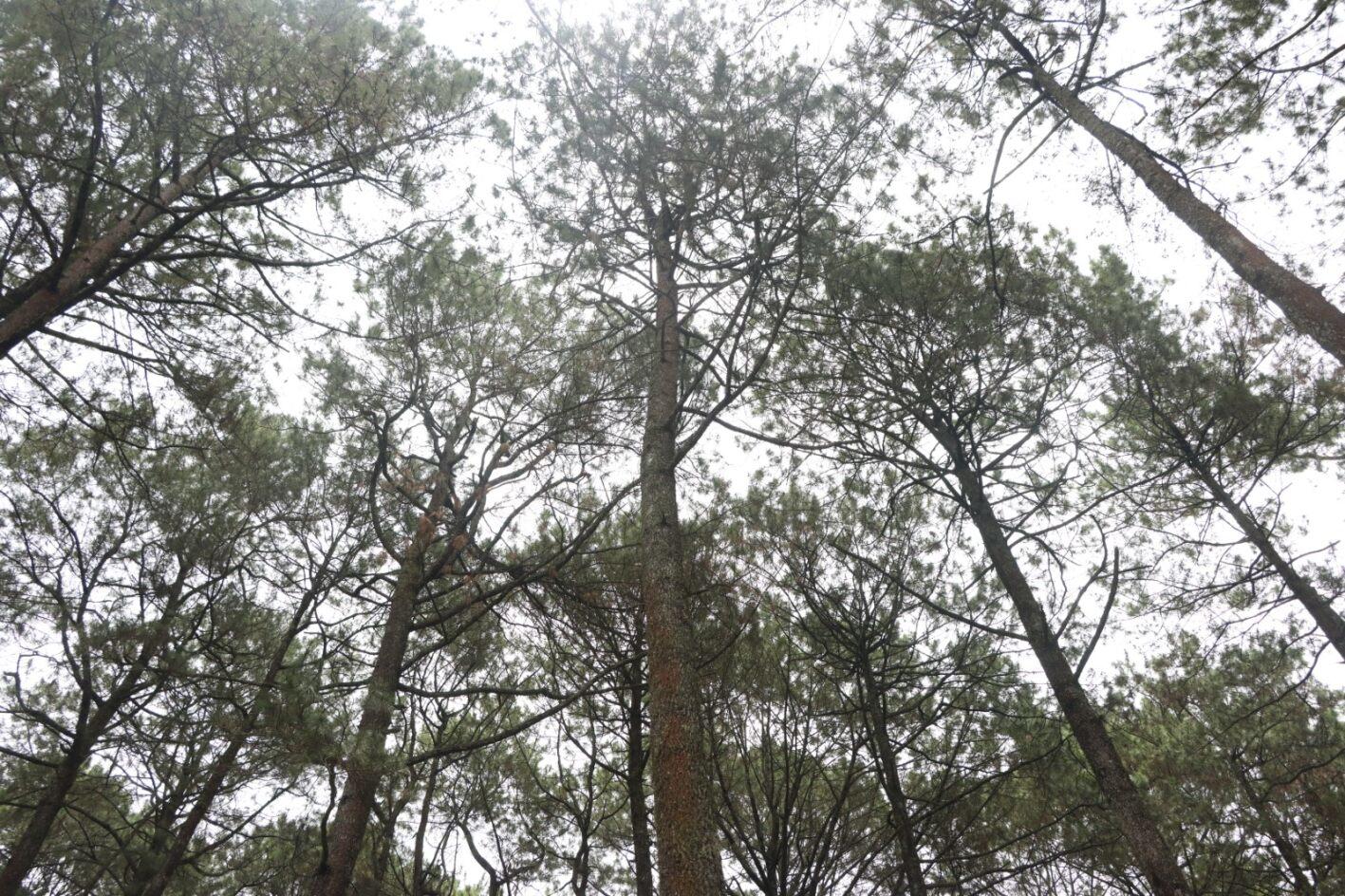
Perhutani’s Pine Seed Orchard in Cijambu, West Java. Photo by: Ysabel Lee
In the next 20 years
The seeds were sown decades ago for Giri Jaya to become a force in forest restoration. Beyond the vision of greening West Java’s landscapes, Pak Tatang is eager to turn the nursery into a space where locals, especially the out-of-school youths, can get jobs and become financially independent. And in no time, enable the community to establish more nurseries to keep the work running.
As efforts to restore and transform sustainable forests increase across the region, the farmer group brings with them lessons and expertise to further capacitate communities engaged in restoration work. In the next decades or so, Giri Jaya’s continued efforts, coupled with heightened partnerships between and among actors in the value chain, would elevate the cause in reversing deforestation figures in Asia.

